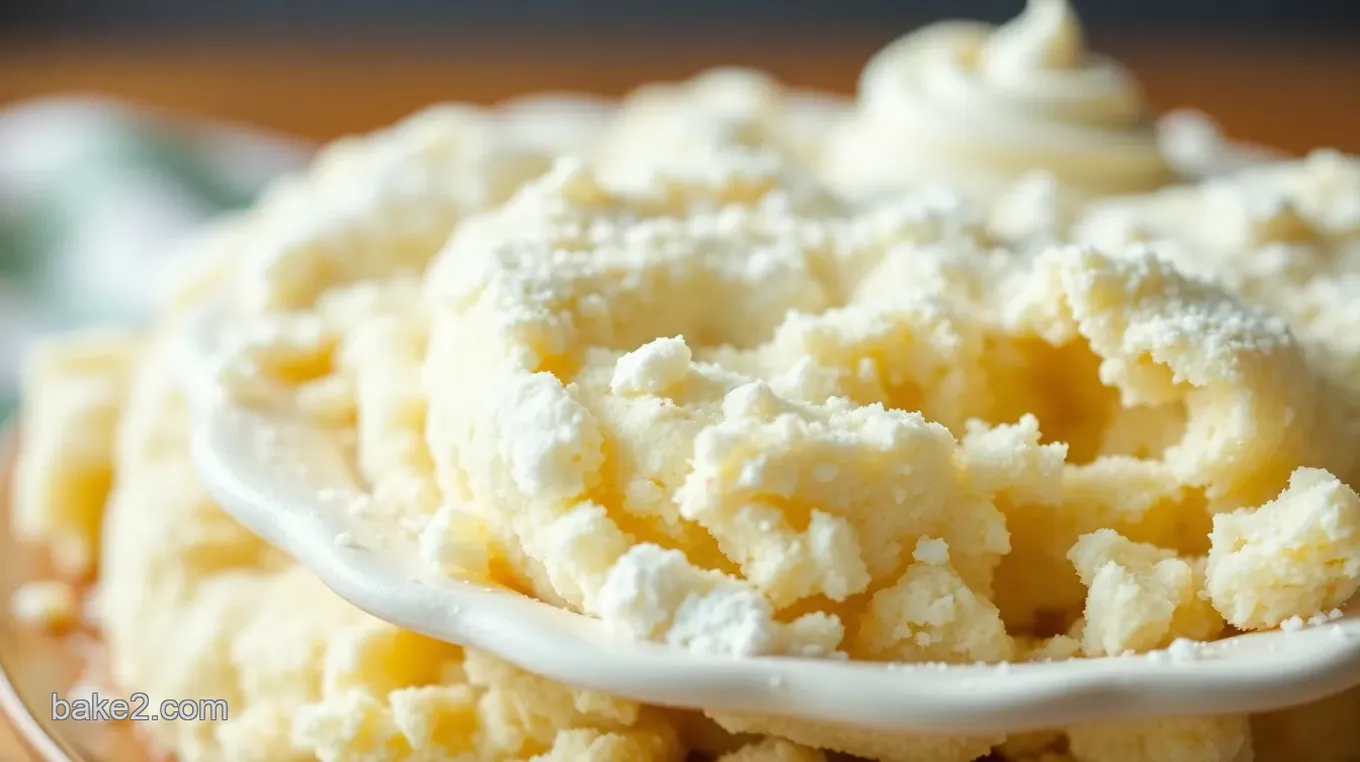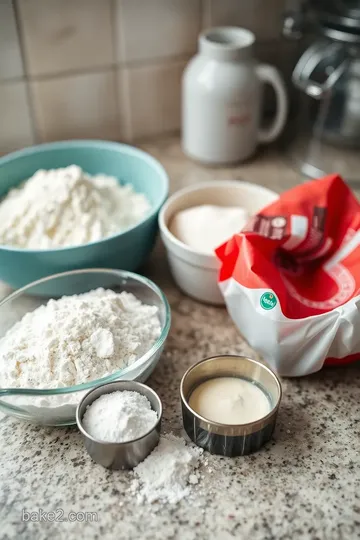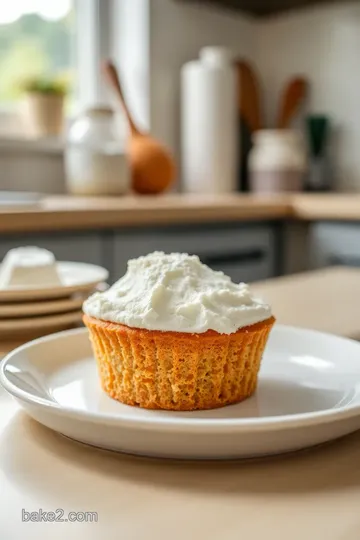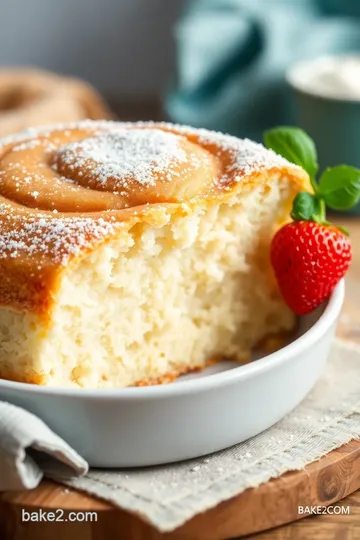Homemade Cake Flour for Light & Fluffy Cakes
Want the lightest, fluffiest cakes? Discover how to make cake flour for light & fluffy cakes with my grandmother’s simple recipe! Perfect every time!

Oh my gosh, let me tell you about the first time i tried to bake a cake from scratch. i was all fired up, determined to impress my friends with a fluffy masterpiece.
But instead of a light and airy delight, i ended up with a dense brick. yikes! a huge part of that tragedy was my choice of flour.
And that, my friends, brings us to the magic of homemade cake flour ! if you want to discover how to make cake flour for light & fluffy cakes , you’re in the right place!
You might be wondering why cake flour is a big deal. well, cakes made with cake flour come out with that soft, tender crumb and delicate texture that makes you want to eat the whole thing in one sitting.
Seriously, who hasn’t devoured a slice and thought, “this is what heaven tastes like”? so let’s dig into how we can help you nail that light baking texture with an easy homemade cake flour recipe.
Recipe Overview
Did you know cake flour has its roots in the late 1800s? yep! back when people started really getting into baking for pleasure, they figured out that some flours worked better for cakes than all-purpose flour.
Fast forward to today, and we see cake flour everywhere, from local bakeries to your grandma’s kitchen. everyone wants that perfect cake base , and homemade cake flour is how you can get it on a budget!
Making your own cake flour only takes about 5 minutes . talk about a time-saver! not to mention, it’s an easy-peasy recipe, so you don’t have to be a baking pro.
You just need some all-purpose flour and cornstarch —two things that are probably already sitting in your pantry.
Cost-wise, whipping up some homemade cake flour won’t break the bank. for about one cup of cake flour, you’ll just need around two tablespoons of cornstarch, which most folks have on hand anyway.
Let’s just say it’s a win-win!
Key Benefits
Now, let’s chat about why you should make this ingredient your baking bff. the first biggie? health benefits and nutrition ! this homemade cake flour offers a lower protein content than all-purpose flour, which helps with that oh-so-important lightness.
If you’re thinking about baking light cakes for family gatherings, this homemade flour is your go-to!
Another excellent reason to whip up your own cake flour? it’s customizable. you can toss in a hint of vanilla or almond extract to elevate your cake’s flavor.
Fancy, right? plus, it’s perfect for special occasions like birthdays or holidays. nothing says “celebration” like a fluffy cake topped with some whipped cream frosting and fresh berries!
Comparing this method to store-bought cake flour is no contest—the cake flour texture from your kitchen is much fresher. plus, you know exactly what’s going in there, giving you control over what you eat.
A Smooth Transition
Alright, are you ready to dive into the nitty-gritty of making your own cake flour? you will need some baking essentials and a few simple ingredients to get started.
Trust me, once you taste your first bite of that light, fluffy cake, you’ll never go back to buying flour again!
Here’s to mastering the art of baking with cake flour. let’s explore the most straightforward way to make cake flour for light & fluffy cakes together! who knows? this could become your favorite baking hack.
Happy baking, and let’s gather those ingredients!

Essential Ingredients Guide
Let’s talk about the nitty-gritty of baking – particularly, the essential ingredients you'll need to create delicious cakes that have a tender crumb and that oh-so-good fluffiness.
We're diving into how to pick the best stuff, substitute if need be, and make that light and fluffy cake magic happen.
Premium Core Components
When you're halfway through a baking project and realize you're missing something, it’s a total bummer. So, let's make sure you have everything you need.
Measurements: for most cake recipes, you'll be eyeballing stuff in cups and tablespoons. but if you're feeling fancy, convert those to grams for precision.
1 cup of all-purpose flour is about 120 grams , while 2 tablespoons of cornstarch weighs in at 15 grams .
A little knowledge goes a long way!
Quality indicators: not sure if your ingredients are good? check the smell! fresh flour should smell just like flour, nothing more.
Cornstarch should be a fine powder, not clumpy. when you see those indicators, you're golden.
Storage guidelines: store your flour in an airtight container to keep it fresh. it’s best to use it within 3-6 months .
One time, i found a dusty bag of flour at the back of my pantry and, y’all, i was not about to risk my cake!
Freshness Tips: Before you bake, do a little sniff test. Old flour or cornstarch? Toss it. Fresh ingredients make the best cake flour for baking .
Signature Seasoning Blend
Now, let’s jazz things up! When it comes to making your cake shine, spice is nice !
Essential Spice Combinations: You might think cake is all about sweetness, but don’t underestimate the power of a pinch of salt or a bit of vanilla extract.
Herb Selections and Pairings: For a unique twist, consider adding a hint of rosemary or lemon zest to really amp up that flavor.
Flavor Enhancers and Aromatics: Incorporate heavy hitters like almond extract! It drastically transforms the cake flour texture.
Regional Variations: Ever heard of a lemon cake in the South? Or a spice cake in the North? Play around with local flavors as you create your masterpiece!
Smart Substitutions
Okay, so what happens if you’re out of something crucial? DON’T PANIC. We’ve all been there.
Common Alternatives: If you don't have cake flour, I recommend making your own! Just blend 1 cup of all-purpose flour with 2 tablespoons of cornstarch . Voila , cake flour!
Dietary Modifications: Gluten-free? No worries! Go for gluten-free all-purpose flour with that same cornstarch combo. It'll still yield fluffy cake, I promise.
Emergency Replacements: Out of baking powder? Mix in equal parts of vinegar and baking soda instead. Just a little baking hack I swear by!
Seasonal Options: In the spring, swap in some fresh berries for a deliciously flavored cake. They're not just pretty; they add a whole new level of yum!
Kitchen Equipment Essentials
Let’s get into the kitchen tools you’ll want on hand, 'cause you know you need the right stuff to nail those layer cake recipes !
Must-Have Tools: You can’t go wrong with a good mixing bowl, measuring cups, and a sifter. Trust me—sifting flour makes a world of difference in achieving that light and fluffy cake texture.
Alternative Equipment Options: If you don’t have a sifter, a fine-mesh sieve works too. If you’re really in a pinch, a whisk can do the trick for mixing dry ingredients.
Preparation Tips: Measure out your flour and cornstarch carefully. Measuring flour accurately can save you from common baking mistakes that lead to dense cakes.
Storage Solutions: Keep all those essential tools organized! A good drawer or container keeps everything easy to find, which is a lifesaver when you just wanna whip up a cake.
With all this knowledge, you’re well on your way to a baking extravaganza! and trust me, making homemade cake flour is key to creating those picture-perfect cakes.
So, are you ready for the next step— how to make cake flour for light & fluffy cakes ? let’s get baking, my friend!
Mastering the Art of Professional Cooking
Getting into professional cooking can feel a bit overwhelming. but trust me, once you get the hang of it, it’s a total game changer! the secret sauce? a few essential preparation steps.
Let’s dive into the nitty-gritty of it all, so you can whip up dishes like a pro in no time.
Essential Preparation Steps
First off, let’s talk mise en place —that fancy french term just means "everything in its place." before you even think about cooking, organize your ingredients.
Measure them out and have them ready to go. it’s way less stressful than scrambling around for a missing spice while dinner’s burning, right?
Now, let’s not forget about time management tips . set a timer for tasks like chopping veggies or simmering sauces. don’t be that person who lets something boil over because they got distracted with their phone! allocate your time wisely; after all, cooking should be fun, not a frantic race against the clock.
Organization is key too. Bring some structure to your kitchen by keeping your utensils and tools within reach. Think of it like your cooking battlefield—you want to know where your weaponry is, people!
And—seriously—safety first! don’t overlook safety considerations . always keep your workspace clean. wash your hands before and after handling food. if you’re working with raw meat, be sure to clean all surfaces afterwards to avoid cross-contamination.
Y’all don’t want food poisoning, trust me!
Step-by-Step Process
Here’s where the magic happens! Let’s break down your cooking process with clear, numbered instructions.
- Preheat your oven to 350° F (or whatever temp your recipe calls for).
- Set up your workstation with all your ingredients.
- Follow precise temperature control points . Cooking is a science—don’t just wing it! For instance, meats usually need to hit 165° F to be safe.
- Be timing precise . Use that timer we talked about earlier. For pasta or rice, timing can make or break a meal!
- Look for visual cues for doneness . You want that golden brown crust on your baked goods and perfectly seared meat.
Expert Techniques
Alright, let’s level up with some expert techniques . first, pay attention to details in your recipes. sometimes, a little tweak can change everything, like switching out all-purpose flour for cake flour for light & fluffy cakes .
Seriously, the difference in texture is insane!
I’ll never forget the first time I substituted regular flour with homemade cake flour in my vanilla layer cake. It was like a fluffy cloud of happiness!
When following critical steps, always check those quality checkpoints . Can you smell that delicious aroma? It’s often a great sign that things are going well.
Now, let’s chat about troubleshooting tips . if your sauce is too thick, simply add a splash of broth or water.
And if a cake isn’t rising, check your baking powder. is it expired? a common mistake, trust me!
Success Strategies
And finally, some success strategies to keep your baking journey smooth. Avoid common mistakes, like overmixing your batter. You want that tender crumb, not a dense brick!
Quality assurance is a must too. For cakes, when you insert a toothpick, it should come out clean or with a few crumbs—not raw batter.
This is also where you can get smart with make-ahead options . prepping ingredients in advance can save you loads of time.
Plus, who doesn’t love a shortcut? think about your homemade cake flour recipe —make a double batch and keep it stored for future baking projects!
Additional Information...
So there you have it, folks! With these tips and techniques under your belt, you’ll be churning out delicious meals and desserts in no time.
And if you ever need to know how to make cake flour or need fluffy cake baking tips , just remember this little article.
Trust me, your future self will thank you when you’re serving up those light and fluffy desserts that leave everyone begging for more!

Pro Tips & Secrets
Alright, let’s spill some secrets for making the best cake flour for those light and fluffy cakes that will leave everyone raving.
First off, always use a sifter ! seriously, sifting your flour isn't just for show. it’s like a spa day for your flour—it lightens it up and breaks up any clumps.
Use that sifter, and watch your cakes achieve that tender crumb texture.
Time-saving tip? make a big batch! seriously, whip up a double portion of your homemade cake flour recipe and store it in an airtight container.
That way, next time you're in a pinch for baking, you won't have to measure out the ingredients all over again.
And about flavor? don’t be shy! a couple of drops of vanilla or even almond extract added right into the flour when baking can elevate your cake to stratospheric levels of deliciousness.
It’s those little gems of advice that make baking feel like magic.
Perfect Presentation
Okay, let’s chat about making your cake as pretty as it is tasty. plating techniques can totally transform your dessert.
Use a cake stand to lift your creation off the table—it gives off major “i’m a baking pro” vibes.
Garnishing your cake is where you can have some fun! fresh berries on top can create a beautiful burst of color and a hint of tartness, balancing out the sweetness.
If you really want to impress, drizzle some whipped cream frosting casually around the edges. trust me; it looks fancy and tastes divine.
Mixing vibrant colors on the plate creates visual delight—think white with splashes of strawberries or dark chocolate sauce.
Storage & Make-Ahead
A common question i get is about storage. after all that hard work, you want your cakes to stay fresh! for your homemade flour, keep it in a cool, dry place , and it’ll last for about a month.
As for the cakes, they’re best eaten fresh, but if you need to store them, wrap them tightly in plastic wrap or slice and freeze them in airtight bags for up to three months.
When you want to enjoy those frozen slices, pop them in the microwave for a few seconds. Just keep an eye on it so it doesn't dry out! A warm slice with that whipped cream frosting sounds heavenly, right?
Creative Variations
Here’s where the fun really starts! you can totally play with flavors to fit the season. think pumpkin spice in the fall or zesty lemon in the summer—both delicious twists for your cakes.
If you’re feeling adventurous, try making a gluten-free cake flour option using rice flour or a good all-purpose flour variation with added cornstarch.
These alternatives can yield tasty results too!
Don't forget about your dietary pals! you can adapt that cake flour by using a cake flour substitute like coconut flour for low-carb cakes.
It’s all about tweaking to make it work for you.
Complete Nutrition Guide
Lastly, let's break down what you’re eating. your homemade cake flour with all-purpose flour and cornstarch packs in about 120 calories per cup.
Not too shabby, right? while cakes aren't health food per se, topping them with fresh berries means you're adding vitamins.
Keep in mind when serving that portion control can help. remember, a smaller slice, beautifully garnished, can make a more significant impact than a giant piece.
Bonus tip: if you’re trying to keep things low-calorie, opt for a lighter frosting or just skip it!
Expert FAQ Solutions
Have questions? you’re not alone! a lot of bakers worry about a few common issues, like "why is my cake too dense?" or "how do i avoid a boozy runny mess of frosting?" quick key: don’t over-mix your batter.
Those fluffy cake baking tips are golden—mix until just combined for that airy texture!
If you ever find yourself in a pinch, borrow some knowledge from your online pals—like those who love layer cake recipes .
Most variations are forgiving, and they often come with solutions for every baking blunder.
So, when it comes down to it, baking should be fun and rewarding. don’t stress about every detail—embrace the process and enjoy the delicious results.
Trust me, with a little patience and creativity, anyone can make light and fluffy cakes that impress.
Happy baking, friend! You've got this!

Homemade Cake Flour for Light & Fluffy Cakes Card

⚖️ Ingredients:
- 1 cup all-purpose flour (120 grams)
- 2 tablespoons cornstarch (15 grams)
🥄 Instructions:
- Step 1: Measure 1 cup of all-purpose flour and 2 tablespoons of cornstarch.
- Step 2: In a mixing bowl, combine the measured all-purpose flour and cornstarch.
- Step 3: Sift the flour mixture through a fine-mesh sieve or sifter to ensure even mixing and aeration.
- Step 4: Use immediately or store in an airtight container for later use.
Previous Recipe: How to Make Quick Flaky Pastry for Delicious Treats: Ultimate Guide
Next Recipe: How to Make the Best Air Fryer Churros - Crispy Sweet Treats!
